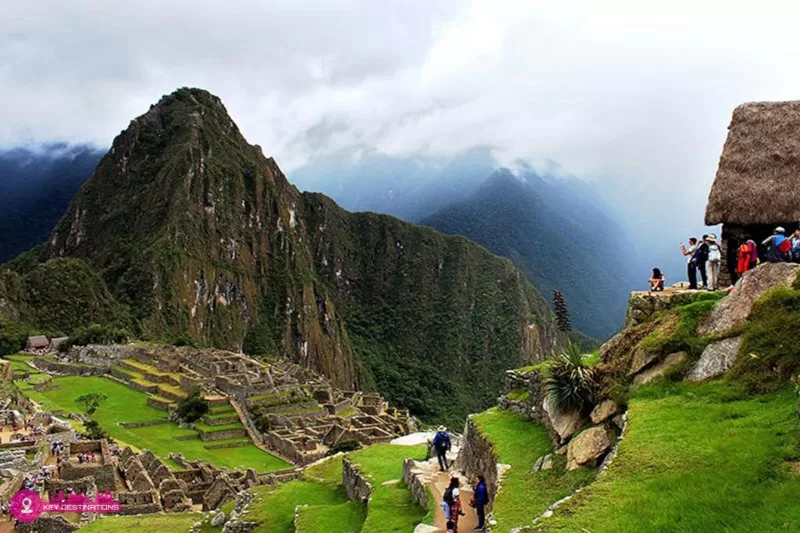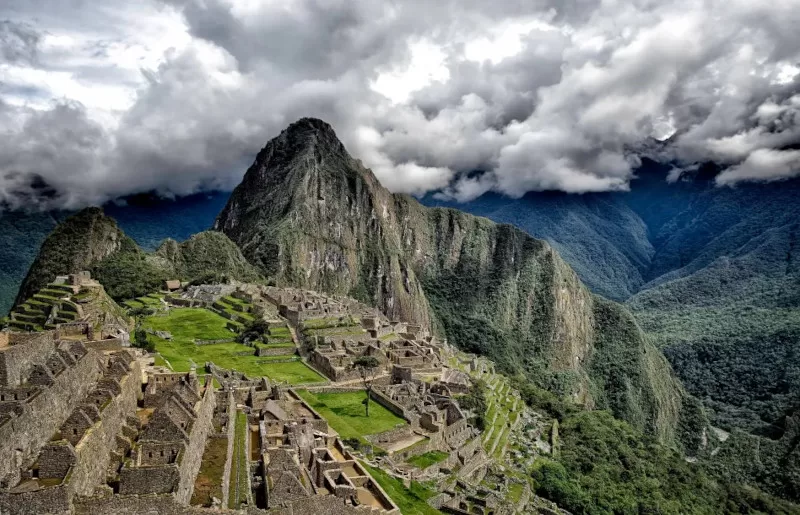Nestled high in the Andes, Machu Picchu remains a testament to Incan ingenuity and resilience. Its breathtaking architecture, surrounded by emerald mountains, is affected by distinct climate patterns. These patterns shape visitors’ experiences, making timing key for an optimal journey.
While the iconic ruins are a year-round attraction, understanding the site’s weather nuances is essential. The variation between wet and dry seasons can dictate trail accessibility and vistas. Thus, awareness ensures a memorable and safe exploration.
Machu Picchu’s location gives it a unique climate. Situated between the Andes and the Amazon basin, its weather showcases diversity. Despite being near the Equator, it’s not always hot.
The dry season, from May to October, presents clear skies. During this period, The citadel sees a surge in visitors. The sun illuminates the ancient stonework, making it ideal for photography. The cooler temperatures also provide a comfortable hiking experience.
Contrastingly, November to April is the wet season. The citadel receives consistent rainfall, bringing lush greenery. The mist creates a mystical ambiance, though the terrain can be slippery. Fewer crowds are an advantage, but rain gear is essential.
Not far away, Manu National Park showcases vast biodiversity. Its proximity affects the microclimates around Machu Picchu. The park’s range from highlands to lowland rainforest contributes to weather variations.
Understanding Machu Picchu’s climate nuances is crucial. While both seasons have their charm, personal preferences matter. Some adore the verdant landscape post-rains, while others seek sunlit ruins.
Regardless of when one visits, The citadel never disappoints. Its timeless beauty is enhanced by the ever-changing weather. Just as the Incas adapted, so do the visitors today.
End your adventure by exploring more. Consider a journey to Manu National Park or dive deeper into the region’s biodiversity. Also, for another perspective, a second visit to Machu Picchu might offer different weather. Each visit, each season, tells a unique story.

Machu Picchu, a marvel nestled high in the Andes, is influenced greatly by its weather. Both rain and sun dramatically shape the visitor experience. Understanding the weather’s impact aids in preparation.
During rainy spells, usually from November to April, the Amazon rainforest contributes moisture. This results in misty mornings at the ruins, often cloaking the ruins in mystery. Although rain may seem a deterrent, it paints the site in vibrant greens, offering unparalleled views.
In contrast, clearer skies between May and October create a different spectacle. The sun casts a golden glow on Machu Picchu’s stone structures. Shadows and light playfully dance, making it a photographer’s dream. Yet, the brighter days also attract more crowds, requiring early arrival for an unobstructed view.
Weather affects exploration beyond just visuals. Rainy conditions might make certain trails slippery. On sunlit days, the sun’s intensity at high altitude means sun protection is essential. Regardless of the season, hydration remains crucial for a safe adventure.
Beyond the immediate experience, weather has long-term effects. Rain contributes to the erosion of ancient pathways. Conservation efforts, therefore, become essential to preserve this UNESCO World Heritage Site. Maintaining the citadel for future generations requires understanding and respecting its delicate balance.
Whether under a cloud canopy or a sunny expanse, Machu Picchu captivates. Its ever-changing moods, dictated by weather, ensure no two visits are alike. So, come rain or shine, the site promises memories that last a lifetime.

Machu Picchu, a world-renowned archaeological wonder, offers a unique experience in every season. Yet, knowing the best times to visit can enhance one’s journey significantly. Timing, indeed, can make all the difference.
From May to October, travelers enjoy the dry season. Skies are clearer, allowing uninterrupted views of the citadel’s breathtaking landscape. This period, particularly July and August, sees a peak in visitors. Thus, booking early is advised for those keen on crowd-free exploration.
Conversely, November to April marks the rainy season. While rain showers are more frequent, they bestow a special charm upon Machu Picchu. The terraces are lush and the mist adds an ethereal beauty to the citadel. It’s less crowded, making it ideal for travelers who prioritize tranquility.
Beyond Machu Picchu’s walls, the surrounding region presents its own wonders. The nearby Manu National Park is a prime example. Boasting biodiversity, it’s a haven for nature enthusiasts. Depending on one’s visit to the ruins, it might be ideal to combine both destinations for a holistic Peruvian experience.
In conclusion, while Machu Picchu promises beauty year-round, one’s preferences dictate the “best” time. Whether you’re seeking sunny panoramas or serene rain-soaked vistas, this ancient city never disappoints.
For those looking to delve deeper into Peru’s natural wonders, consider extending your journey. Take a Manu Jungle Tours or immerse in the pristine wilderness with Manu Reserved Zone Tours. These adventures promise unparalleled insights into Peru’s rich ecosystems and cultural tapestry.

If you got any questions, please do not hesitate to send us a message. We reply within 24 hours!
+51 900 394 399
info@biomanuexpeditions.com
reservas@biomanuexpeditions.com
